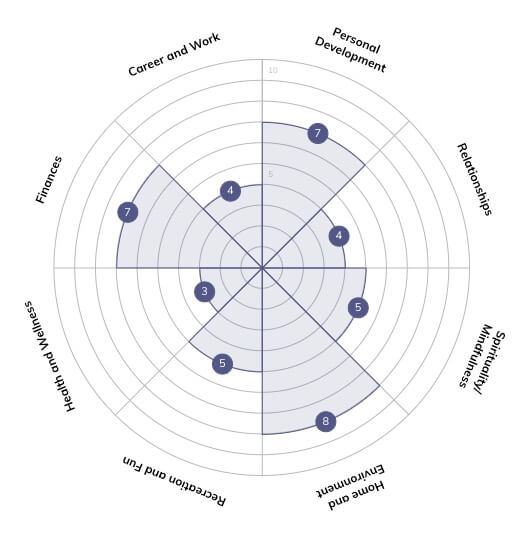As usual, the start of a new year is the perfect time to set goals for the next phase. It is the same as the first of September or your birthday — or any other time, actually :). But it is in human nature to start thinking about life’s improvements on the above dates.
I prefer New Year's Eve as a starting point. I like that plans and goals are" wrapped” in a year. There is also a cosy atmosphere and some slowness around. It's a great time for thinking.
This time, it was in perfect sync with the changes in my life, and I was fully ready to set new goals. In this post, I’ll explain the process that works. Let’s go!
Ready? [Analyse]
Before jumping straight into setting goals, creating impossible-to-complete plans, and forgetting about resolutions next week, I start with self-reflection — Do I like who I am? What I’m doing, how I’m looking? What are my dreams? Who do I want to be? Etc.
To organise the process, I use the Wheel of Life tool [1]. It helps analyse and visualise one's current state of life, covering all areas (such as family and relationships, career, finances, health, etc.). For each category, I ask myself a set of questions. Answers help to set a core from 1 to 10 for each category and get the resulting picture like this:

I use Google Sheets to score each category and build a wheel as a Google Sheets chart, but predefined tools are available online, or you can use pen and paper.
Once I see the picture, I’m moving to the next step — translating these reflections into concrete goals and creating a plan to rebalance the wheel where needed.
Steady? [Plan]
For every category, I identify what is missed and what could improve the score. Then, I convert each gap into a goal and list them in the Notion. I found Notion helpful in cases where I need structure (a template for each goal) and the possibility to review data on different levels (per category, goal details) and views (boards view, timeline view, etc.).
Once I list goals, I ensure they are SMART: Specific, Measurable, Achievable, Relevant, and Time-bound. Following these criteria helps me set realistic goals, action items, timelines, and priorities. These allow me to plan the week and identify what I should work on the following week.
This plan is called the PDP — Personal Development Plan. [2]
Also, PDP stands for Personal Development Planning [3]:
A structured and supported process undertaken by an individual to reflect upon their own learning, performance and/or achievement and to plan for their personal, educational and career development. (QAA, 2001, 2009)
GO! [Action]
In the article “An overview of the development of Personal Development Planning (PDP) and e-Portfolio practice in UK higher education,” I found this line [3]:
PDP is a verb not a noun.
And it was so life-changing for me at that time! I mentioned in the previous section that PDP is plan and planning, but this quote for me means this:
Any plan can be conquered by simply planning what can be achieved next week from the goals and action items and reviewing what was completed at the end.
I recommend reviewing the short video on the Personal Development Planning process by The Open University, where they describe in detail the method I mentioned above [2]:

Following these simple yet powerful instructions can help you complete any goal. ;) Have a productive and successful year, folks!
Resources
“The Art of Life Balance: Unraveling the Secrets of the Wheel of Life” by Ernst Jansen.
“Personal development plan (PDP)“ by The Open University.
“An overview of the development of Personal Development Planning (PDP) and e-Portfolio practice in UK higher education” by Janet Strivens and Rob Ward Centre.
